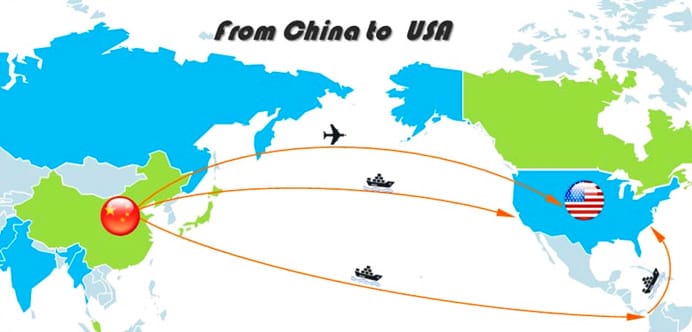
Is the China > Mexico > USA Shipping Route Still Viable in 2025?
As U.S.-China trade tensions intensify and tariffs climb as high as 145% on Chinese goods, many exporters and importers are seeking alternative paths to reduce duty costs. One such method that gained popularity during earlier phases of the trade war is transshipment — specifically, routing goods from China to Mexico, then into the U.S..
But in 2025, is this strategy still effective — or simply too risky?
Why Some Businesses Consider This Route
- Avoiding High Tariffs on Chinese Goods
With sharply increased duties on imports directly from China, routing products through Mexico seems like a clever workaround. - USMCA Agreement
The U.S., Mexico, and Canada are part of the USMCA trade agreement, which allows for duty-free or reduced-duty treatment on qualifying goods — provided they meet strict Rules of Origin. - Relabeling or Light Processing in Mexico
Some companies attempt to repackage, relabel, or slightly modify products in Mexico in hopes of qualifying them as “Mexican origin.”
Why the Risks Are Greater Than Ever
While this method may have worked in isolated cases, in 2025 it comes with significant legal and financial risks:
- Tighter Scrutiny by U.S. Customs (CBP)
CBP is cracking down on transshipment schemes. If a product is merely transloaded or minimally processed in Mexico, it does not qualify as Mexican origin — and will still be hit with full Chinese tariffs.
- Severe Penalties for False Declarations
If customs determines a false origin claim was made:
- Goods can be seized
- Importers can face hefty fines
- You risk being placed on a restricted trader list
- Higher Operational Complexity and Cost in Mexico
- You need local warehousing and customs clearance support
- Must navigate local regulations and taxes
- Risk delays due to inspection or non-compliance
When Can the Route Be Legal and Effective?
- If substantial transformation happens in Mexico (e.g., full assembly, significant value-added processing)
- The final product must meet USMCA origin rules
- Documentation must be transparent, traceable, and verifiable
What Should You Do Instead?
- Work with a professional freight forwarder to evaluate the true cost and legal risks
- Explore DDP shipping solutions that offer transparent tax-inclusive pricing
- Consider sourcing or assembling products in Southeast Asia or other low-tariff regions
- Stay informed on the latest tariff updates and trade rules
Final Thoughts
The China > Mexico > USA transshipment method is no longer a loophole you can rely on without significant risk. In today’s trade environment, compliance is key. Businesses that try to cut corners could end up paying more in penalties than they save on duties.
Looking to ship smarter, not riskier?
Zcyt Logistics provides expert consultation and compliant shipping solutions from China to the U.S., EU, and beyond.
📩 Contact us today:
- WhatsApp: +8613316457825
- Email: info@zcytsupplychain.com
